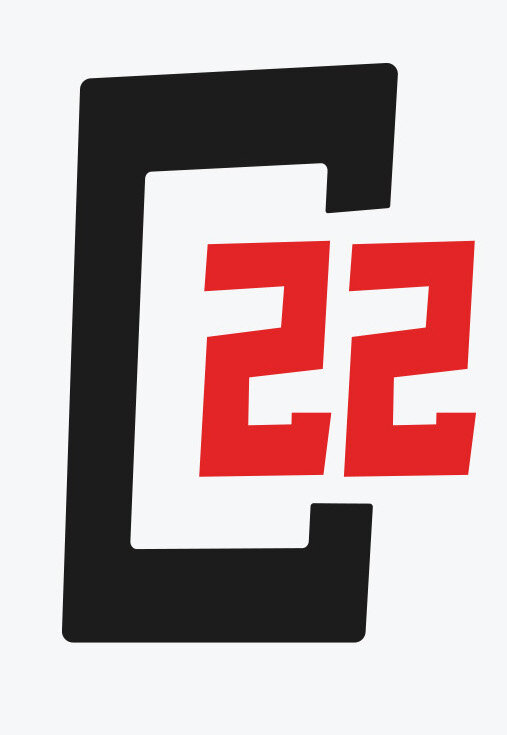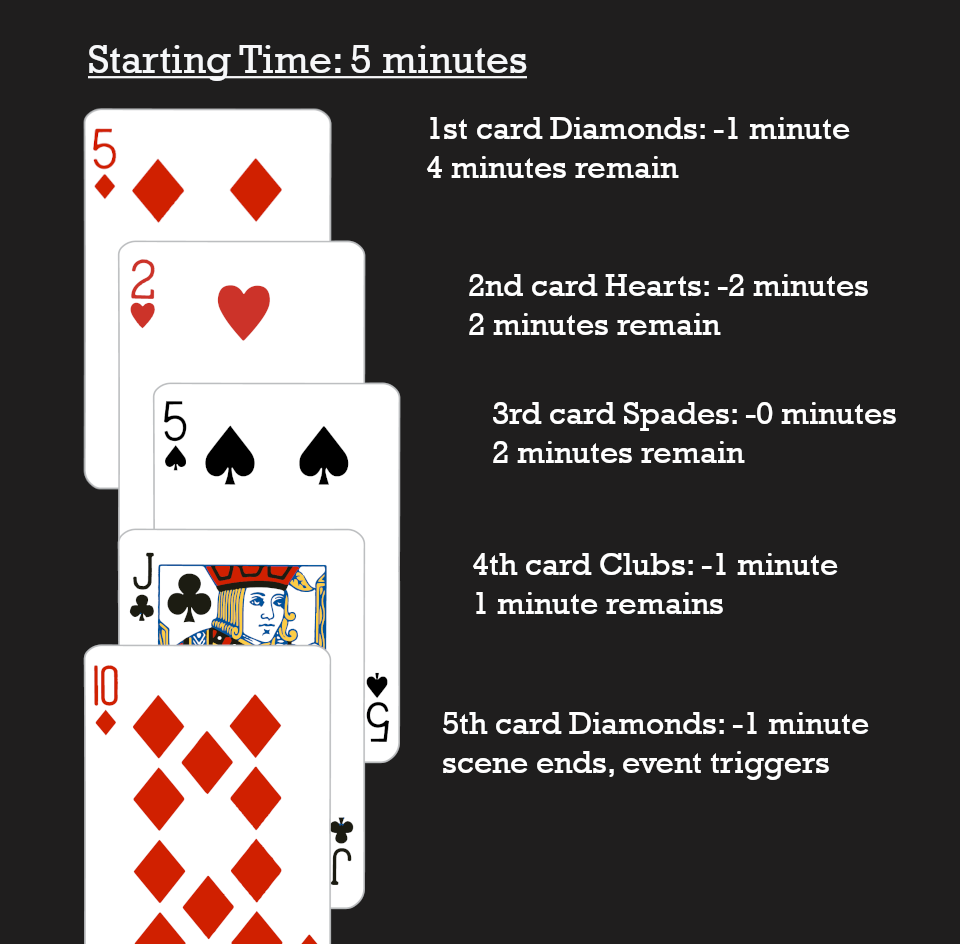I created two tools to provide something physical for your tabletop RPG scenes and I realized that they can be used for any system to help you run your games. So I wanted to talk about how you can do just that. Furthermore I will go into how you can use the mechanics, to help inspire your creativity to liven up complex tasks or add complications to encounters and scenes.
The first mechanic, named boards, track the progress of a complex task with cards being added or disappearing from the spread of cards. You can read more about it here from my first post about this topic.
The second mechanic I use to encapsulate a scene is a countdown clock with cards. This system is much simpler than boards.
First an amount of time is set and everyone at the table is informed.
Each round of actions lasts 1 minute and each player will say what their character is doing during that round. The Dealer/GM will set the real time between each card pull and can pull a card whenever they feel an appropriate amount of time has been given to respond.
When the Dealer feels it is time to pull a card, draw one card and reduce the time remaining depending on the suit:
Diamonds or clubs, 1 minute passes, or 1 round
Hearts or the Black Joker, 2 minutes pass, or 2 rounds
Spades or Red Joker, no time passes, or 0 rounds.
When all the time runs out, the scene is done and the danger presents itself. The players now have a new problem to deal with.
Here is an example of how this works in a game:
Emily, Jace, and Tasha sneak into a noble's house and just make it to the bedroom when they hear the front door open. The Dealer decides a reasonable time until the action occurs and states it to the group. The Dealer does not always need to state what will occur exactly, only that something will occur. This builds tension as the clock ticks down.
In this case the Dealer decides 4 minutes. Emily searches the desk for the documents they need while Jace goes to check the hallway to see how much time they have left. Tasha also begins her search starting with the bed, chest, and bedside tables. The Dealer feels like these actions would take about a minute and draws a card: it’s hearts, meaning the group took 2 minutes and now only 2 minutes remain. Tasha abandons her search and starts unlocking the window. Emily finds the documents and begins copying the signature. Jace returns and pockets some jewelry. The Dealer draws again, this time clubs, 1 minute left. Emily finishes her forging job and applies the noble house’s seal to complete the look. Jace starts tossing the room to make it look like a regular burglary. Tasha doesn't decide what to do in time and the Dealer draws again: spades, the team got lucky. They all make a bolt through the window and begin the climb down. The dealer draws the final card, clubs, and therefore the timer ends. The noble enters the room, and the event is complete.
Now this system can be used for a variety of different time scales to match whatever your players are doing. Here are a few example situations:
The wraith that has been plaguing the nearby town has an effigy somewhere in the nearby forest, the effigy is only visible in twilight or at night but the wraith appears every night. The players begin their search during sunset, and night begins 2 hours after. Set each round to be about 30 minutes as they choose what to do to either search or prepare for the coming wraith.
The boat the heroes are on is heading straight for a whirlpool. They just started escorting the few passengers onto a helicopter to escape. They have 3 minutes and each round is 30 seconds.
The large stone doors of the temple are beginning to close at a cinematically slow pace. The players have 30 seconds to reach the doors and dodge past all of the skeletal guards. Each round is 6 seconds.
Health is not the only resource the players should lose. What are some other tools you use to build tension in a scene or encounter? Let me know in the comments or on reddit or @C22system. If you like what I am doing let me know and follow me @c22system or join my discord for C22(https://discord.gg/gAJpjZXuYq)




